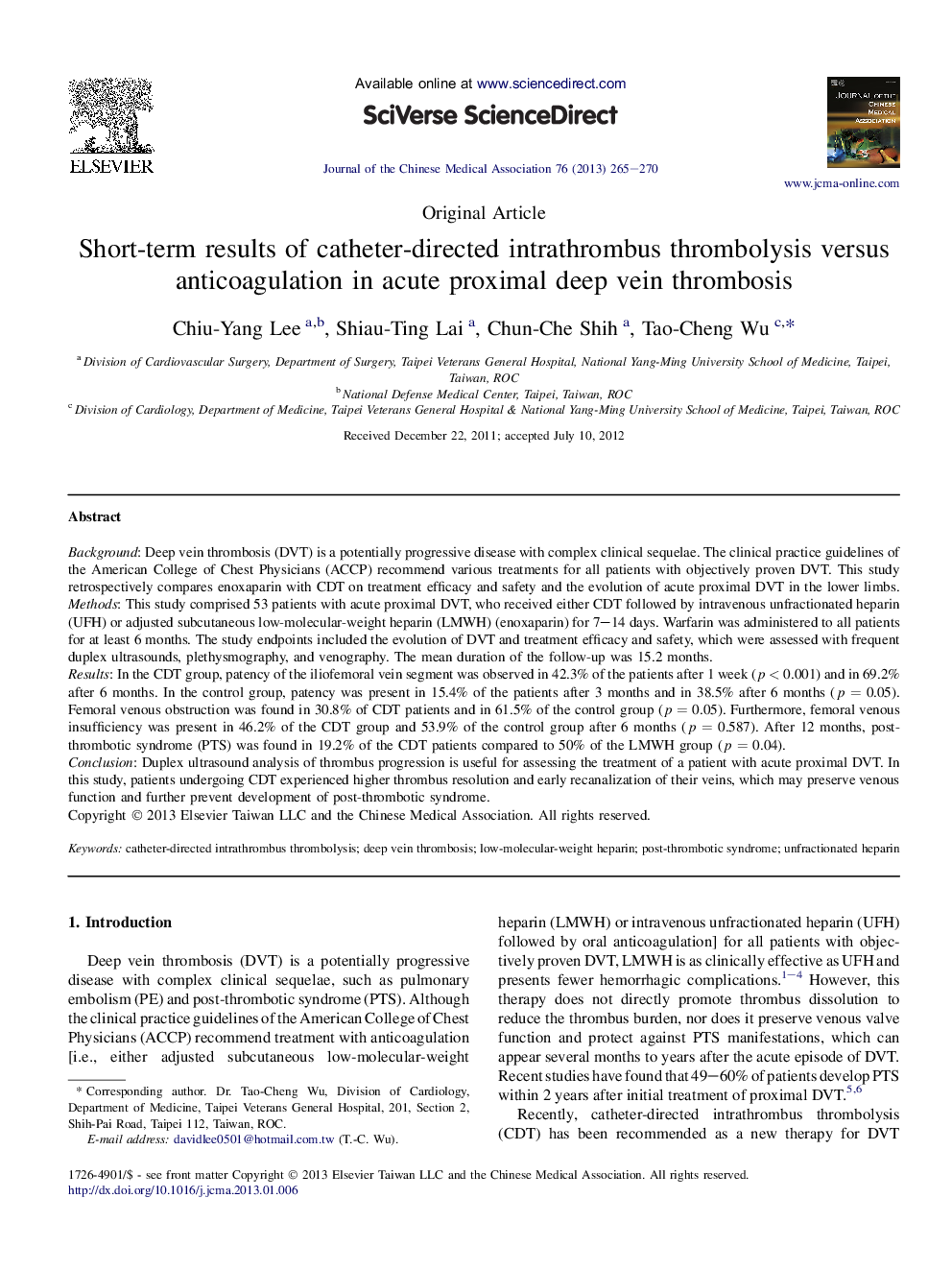| کد مقاله | کد نشریه | سال انتشار | مقاله انگلیسی | نسخه تمام متن |
|---|---|---|---|---|
| 3476477 | 1233262 | 2013 | 6 صفحه PDF | دانلود رایگان |

BackgroundDeep vein thrombosis (DVT) is a potentially progressive disease with complex clinical sequelae. The clinical practice guidelines of the American College of Chest Physicians (ACCP) recommend various treatments for all patients with objectively proven DVT. This study retrospectively compares enoxaparin with CDT on treatment efficacy and safety and the evolution of acute proximal DVT in the lower limbs.MethodsThis study comprised 53 patients with acute proximal DVT, who received either CDT followed by intravenous unfractionated heparin (UFH) or adjusted subcutaneous low-molecular-weight heparin (LMWH) (enoxaparin) for 7–14 days. Warfarin was administered to all patients for at least 6 months. The study endpoints included the evolution of DVT and treatment efficacy and safety, which were assessed with frequent duplex ultrasounds, plethysmography, and venography. The mean duration of the follow-up was 15.2 months.ResultsIn the CDT group, patency of the iliofemoral vein segment was observed in 42.3% of the patients after 1 week (p < 0.001) and in 69.2% after 6 months. In the control group, patency was present in 15.4% of the patients after 3 months and in 38.5% after 6 months (p = 0.05). Femoral venous obstruction was found in 30.8% of CDT patients and in 61.5% of the control group (p = 0.05). Furthermore, femoral venous insufficiency was present in 46.2% of the CDT group and 53.9% of the control group after 6 months (p = 0.587). After 12 months, post-thrombotic syndrome (PTS) was found in 19.2% of the CDT patients compared to 50% of the LMWH group (p = 0.04).ConclusionDuplex ultrasound analysis of thrombus progression is useful for assessing the treatment of a patient with acute proximal DVT. In this study, patients undergoing CDT experienced higher thrombus resolution and early recanalization of their veins, which may preserve venous function and further prevent development of post-thrombotic syndrome.
Journal: Journal of the Chinese Medical Association - Volume 76, Issue 5, May 2013, Pages 265–270